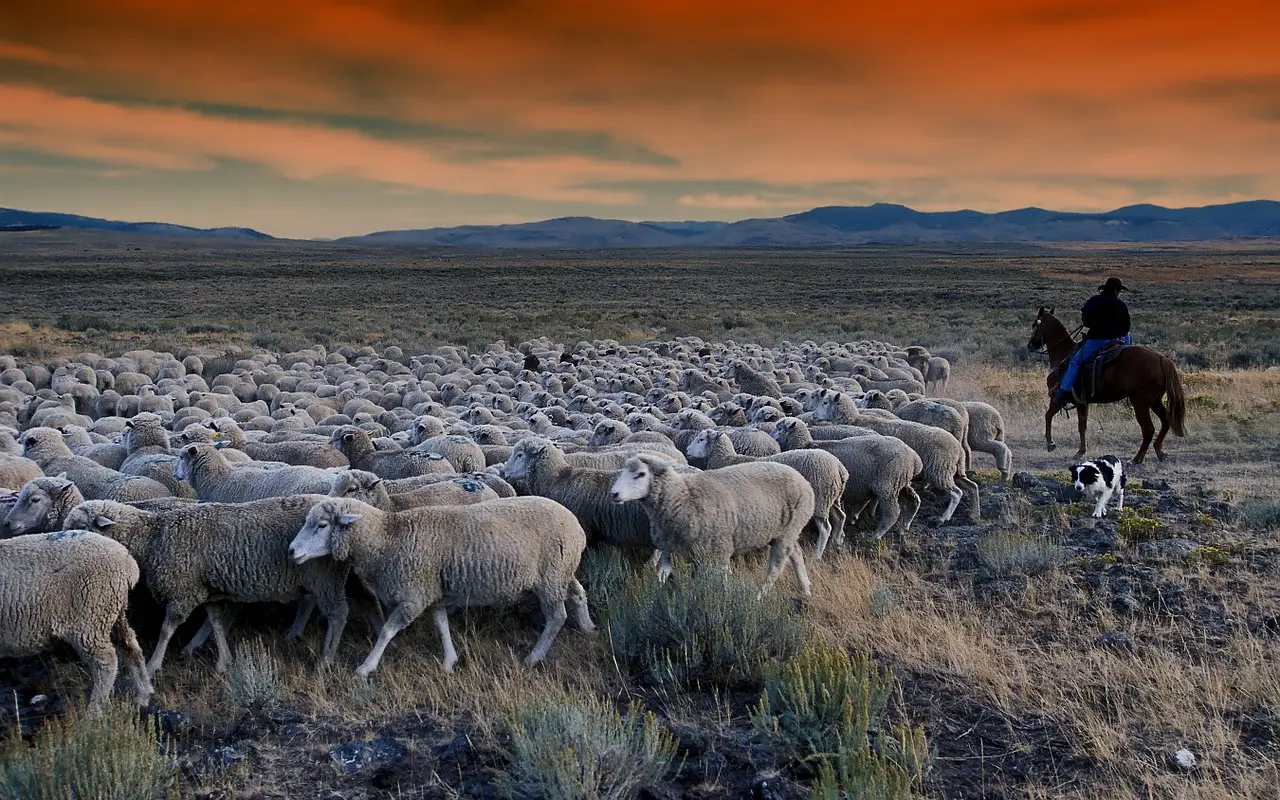
While Trailing of the Sheep has been cancelled this year, area ranchers will still be trailing sheep for winter grazing (view sheep info and sheep reports here). So while we’ll have to sit this year’s festivities out, we can look forward to next October when the Trailing of the Sheep event celebrates its 25th anniversary.
Until then, here are some fun facts about the event you might like to know:
In recent years, the Festival has grown to a five-day event that draws more than 25,000 people to the Wood River Valley annually. It includes a variety of sheep-related activities, such as cooking classes, lamb dinners, wool crafting classes, sheepdog trials, and the famous Big Sheep Parade, where more than 1,500 sheep are herded down Main Street in downtown Ketchum. The event also includes the ever-popular Folklife Fair, which showcases the cultural heritage of Scottish, Polish, Peruvian, and Basque influences in the Wood River Valley.
The Trailing of the Sheep is considered one of the best fall festivals in the world and has received the Idaho Governor’s Award for Cultural Heritage, making it a can’t-miss event for people all around the world.
How Did it All Begin?
The very first sheep are said to have been herded into the Wood River Valley over 150 years ago by John Hailey. He, along with many other adventures, came here in the 1860s for the gold rush and the mines that were rich and full of minerals back in the 19th century. With this influx of people and sheep, mining and sheep herding became the two main pillars of the regional economy.
Another crucial factor for the success of local sheepherding was the immigration of Basque people. Basques began to arrive in the U.S. from their homeland in northern Spain in larger volumes during the 1850s. They soon moved westward in pursuit of gold and new opportunities, with many landing in parts of rural central Idaho. Sheepherders noticed this and realized they could leave their herds with the Basque people in these remote areas for extended periods of time without having to worry about the animals’ welfare. This became common practice among herders, and the dedication and work ethic of the Basque people became well known.
Eventually, the Basque people began breeding and herding their own sheep. They soon became staples in the sheepherding community of central Idaho and began to flourish there as a people. Prominent Basque sheepherding families included the Cenarrusas, Etcheverrys, Guerrys and Oxarangos.
How Did the Festival Come to Be?
The Trailing of the Sheep Festival didn’t officially come into being until 1997. The Peavey family, a prominent Wood River Valley sheepherding family, needed to move their herds south from their summer feeding pastures through Sun Valley to where they were kept during the winter months. Instead of making a nuisance herding their sheep through the area, they decided to turn it into a parade. After working with city officials and obtaining the right approvals, the Peaveys brought the Trailing of the Sheep Festival to life.
Twenty-four years later, the festival has become an integral part of the Wood River Valley community, contributing more than $4 million to the local economy each year. And while it is unfortunate the event won’t be held this fall, we are already looking forward to next year, when the Trailing of the Sheep Festival returns Oct. 6-10, 2021.



